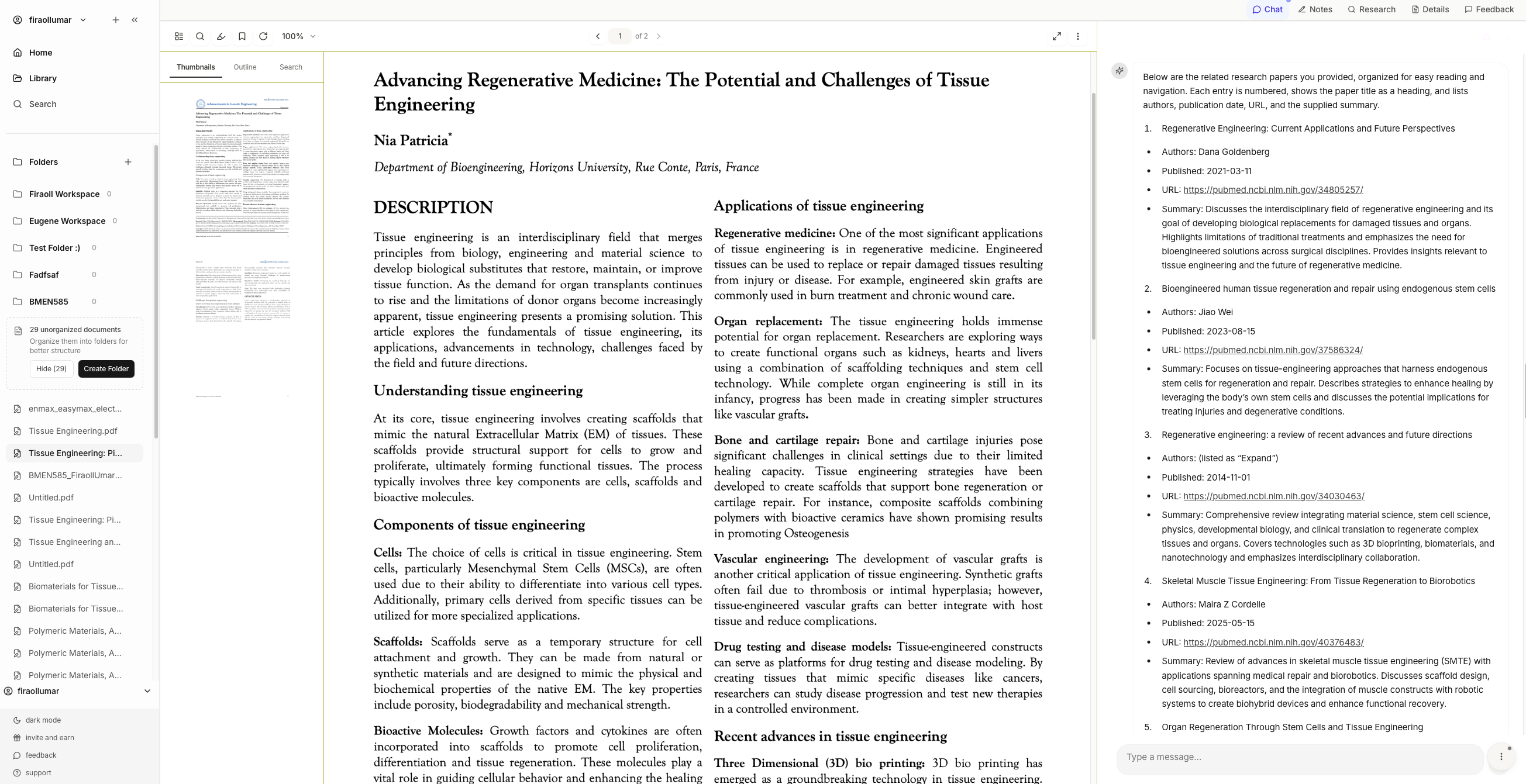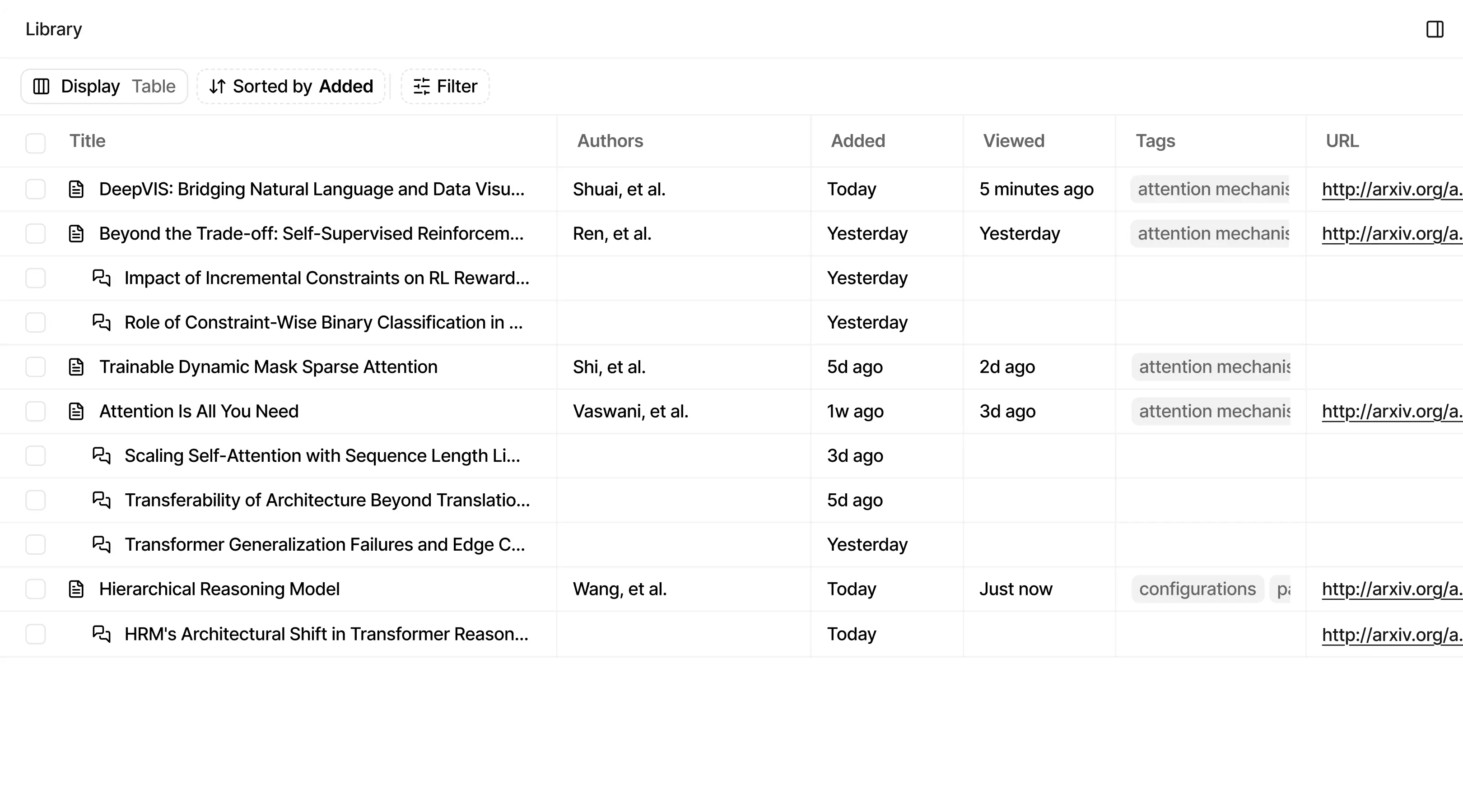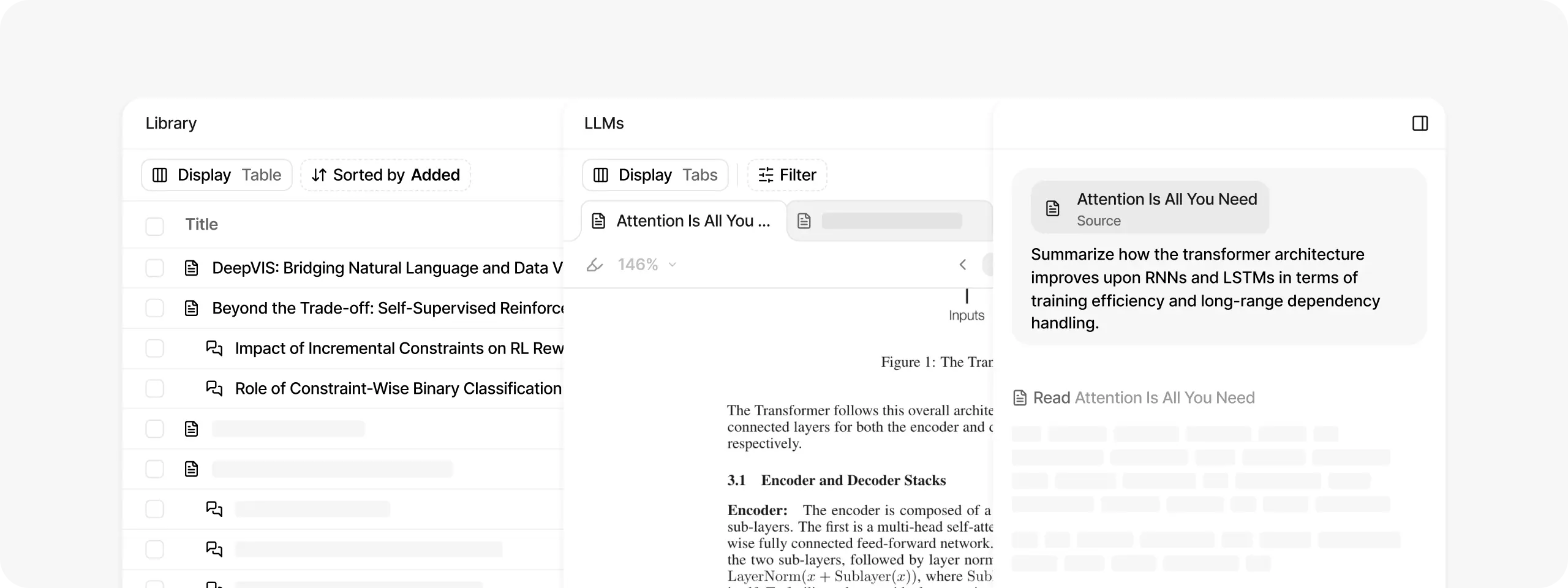Agents designed for scientific and medical advancement
A workspace for scientific inquiry. Designed to help you search literature, review evidence, and write with accuracy.
Trusted by researchers and students
Question: Do GLP‑1 receptor agonists reduce MACE in adults with type 2 diabetes?
Methods
Random‑effects meta‑analysis across CVOTs; primary endpoint: 3‑point MACE. Secondary: HbA1c, weight, safety.
Key result
Across pooled trials, GLP‑1 RAs show a consistent reduction in MACE with low heterogeneity.
All-in-one platform
to enhance your research
Integrated search engine
Find and discover relevant papers across multiple databases without leaving your workspace
Built-in reference manager
Organize citations and generate bibliographies automatically as you write and research
Research-focused editor
Write, annotate, and structure your work with tools designed specifically for scholarly writing
Built specifically for academic workflows
Modern research methodologies emphasize the value of comprehensive data analysis1. Scholars utilize advanced analytical frameworks2 to examine complex research questions systematically3. This methodology facilitates thorough investigation of multiple variables simultaneously, enhancing research quality and reliability4.
Get more accurate references
Every insight links to original sources so you can verify information with a single click
What are the key differences between this methodology and the approach described in Research Methods in Practice?
Responds using your files
Eliminate hallucinations by limiting responses to your uploaded files
Find citations
Empirical research methods and statistical analysis
Sarah J. Martinez
Find citations automatically
Serenoty searches for relevant papers and books based on your writing
Understand any file or group of files, instantly
Whether it's a dense 200-page textbook, a new clinical study, or a technical research paper, just upload it and start asking questions

Navigate documents and notes with tabs mode
Switch between documents and notes effortlessly with tabs mode. Search, annotate key details, take notes, and search across papers—all in one organized workspace.

Tab navigation
Switch between documents, notes, and search seamlessly
Quick search
Find documents and notes instantly across your workspace
Linked notes
Create notes with inline citations and references
Smart Document Management
Organize and manage research documents with intelligent categorization
Documents
| Paper Title | Lead Author | Date Added | Last Reviewed | Keywords | Source |
|---|---|---|---|---|---|
Machine Learning Applications in Early Cancer Detection | Patel, et al. | Today | 5 minutes ago | oncologymachine learningearly detection | Source |
Neural Network Models for Predicting Patient Outcomes in ICU | Anderson, et al. | 1w ago | 3d ago | critical careneural networkspredictive modeling | Source |
Deep Learning for Medical Image Analysis in Radiology | Kumar, et al. | 2d ago | 1h ago | radiologydeep learningmedical imaging | Source |
Transformer Architectures for Medical Diagnosis | Chen, et al. | Yesterday | Just now | medical imagingtransformersdiagnosis | Source |
Natural Language Processing for Clinical Note Analysis | Rodriguez, et al. | 5d ago | 2d ago | nlpclinical noteselectronic health records | Source |
Reinforcement Learning for Personalized Treatment Recommendations | Thompson, et al. | 1w ago | Yesterday | personalized medicinereinforcement learningtreatment | Source |
Biomarker Discovery Using Machine Learning in Precision Medicine | Singh, et al. | 3d ago | 1d ago | biomarkersprecision medicineml | Source |
Federated Learning for Multi-Institutional Medical Research | Martinez, et al. | 4d ago | 2d ago | federated learningmulti-institutionalprivacy | Source |
Smart folders
Organize documents with intelligent categorization
Document preview
Quick access to document details and metadata
Advanced search
Filter and find documents with powerful search
Sepsis is defined as life‑threatening organ dysfunction caused by a dysregulated host response to infection [1].
Operationally, organ dysfunction is captured by an acute change in SOFA score, and bedside screening can leverage qSOFA in out‑of‑ICU settings [1] [2].
Key idea: standardize detection (SOFA/qSOFA) and pair with timely resuscitation + lactate monitoring for better outcomes.
Master clinical scenarios with neural voice synthesis
Coming SoonPractice clinical communication with voice-enabled patients that respond naturally to your questions and concerns. Build confidence through unlimited repetition without judgment—refine your approach, improve your technique, and prepare for real-world patient encounters.
Realistic Patient Interactions
Practice with realistic patients powered by neural voice synthesis that responds naturally to clinical communication.
Multi-turn conversational dialogue with context retention
Emotional state modeling for realistic patient responses
Dynamic scenario adaptation based on student performance
Support for diverse patient demographics and backgrounds
Immediate Detailed Feedback
Receive instant intelligent assessment of clinical reasoning, communication skills, and diagnostic approach.
Comprehensive Clinical Coverage
Access evidence-based scenarios across all medical specialties with graduated difficulty levels.
Clinical Scenarios
Avg Improvement
Response Time
Languages
Sesame Conversational Speech Model
Advanced transformer architecture optimized for conversational speech generation with emotional intelligence and contextual awareness.
How Serenoty compares
Compare features across research platforms
Serenoty
Notion
Mendeley
Google Scholar
No credit card required • Free forever
